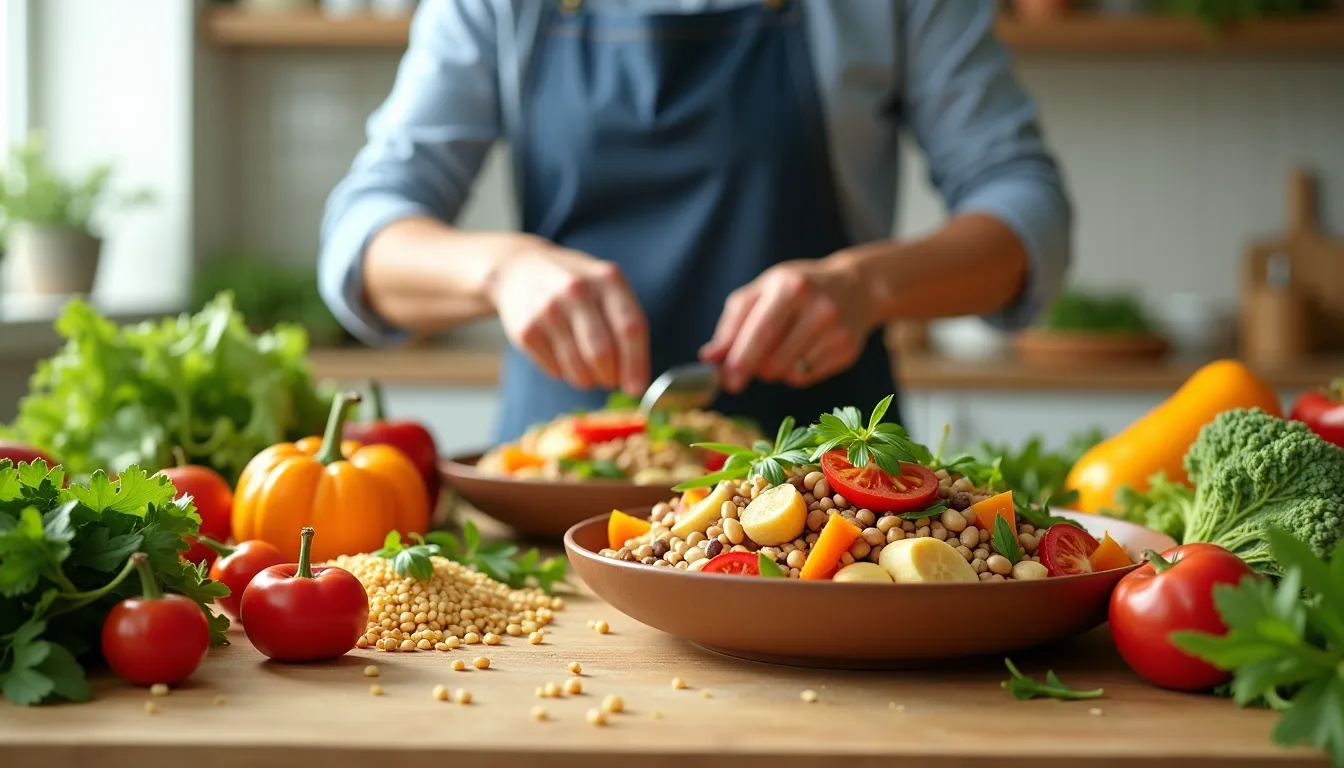Embarking on a high-protein vegetarian diet might seem like a culinary paradox, but it’s a journey that’s both exciting and nourishing. Let’s uncover the secrets of plant-based protein powerhouses that can rival even the meatiest of meals. Are you ready to energize your body without compromising your values?
The Protein-Packed Vegetarian Plate: A Nutritionist’s Dream
Dr. Sarah Thompson, a nutritionist at New York Wellness Center, explains, “A well-planned vegetarian diet can easily meet protein requirements. It’s like building a strong house – you just need the right materials.” Those materials? A colorful array of legumes, grains, and vegetables that form the foundation of a protein-rich vegetarian diet.
Legumes: The Unsung Heroes of Plant Protein
Beans and lentils are the heavyweight champions in the vegetarian protein arena. A cup of cooked lentils packs a whopping 18 grams of protein, while chickpeas offer 20 grams per serving. These versatile legumes are like the Swiss Army knives of nutrition – they can do it all!
Quinoa: The Complete Protein Superstar
Quinoa isn’t just trendy; it’s a nutritional powerhouse. With 7.5 grams of complete protein per cup, it’s the grain that thinks it’s a legume. Incorporate quinoa into your meals to boost your protein intake and add a delightful nutty flavor to your dishes.
Tofu and Tempeh: Soy’s Dynamic Duo
Tofu and tempeh are like the chameleons of the vegetarian world – they absorb flavors beautifully while providing a protein punch. A cup of tempeh contains a staggering 33 grams of protein, making it a go-to for those looking to build muscle on a plant-based diet.
Nuts and Seeds: Small Packages, Big Nutrition
Don’t underestimate these tiny nutritional giants. Hemp seeds, for instance, offer all nine essential amino acids in just a tablespoon. Sprinkle them on salads or blend them into smoothies for an easy protein boost.
Veggie Protein: Green and Clean
Vegetables aren’t just sidekicks in the protein story. Spinach, with 5 grams of protein per cup, and Brussels sprouts are surprising sources of this essential nutrient. It’s like finding hidden treasure in your garden!
The Art of Protein Combining
Remember the classic rice and beans combo? It’s not just delicious; it’s nutritionally savvy. Combining different plant proteins ensures you get all essential amino acids, creating a complete protein profile that rivals animal sources.
Tips for Thriving on a High-Protein Vegetarian Diet
- Diversify your protein sources at each meal
- Plan your meals to include a protein-rich food
- Consider protein smoothies for an easy boost
- Don’t shy away from plant-based protein powders
A Day in the Life of a High-Protein Vegetarian
Imagine starting your day with a quinoa breakfast bowl, followed by a hearty lentil soup for lunch, and a dinner of grilled tempeh with roasted vegetables. It’s not just possible; it’s delicious and nutritionally complete!
“Adopting a high-protein vegetarian diet is like giving your body a first-class ticket to health,” says Dr. Thompson. “It’s about nourishing your body while caring for the planet.”
As you embark on this journey, remember that protein isn’t just about building muscle. It’s about creating a foundation for overall health and vitality. For those looking to explore beyond their plate, consider discovering San Francisco’s secret jazz scene to nourish your soul as well as your body.
Are You Ready to Revolutionize Your Plate?
Embracing a high-protein vegetarian diet isn’t just a dietary choice; it’s a lifestyle that can lead to improved health, increased energy, and a smaller environmental footprint. Whether you’re a long-time vegetarian or just dipping your toes into plant-based eating, remember that with the right knowledge and a dash of creativity, you can thrive on a diet that’s both delicious and protein-packed. So, are you ready to take the plunge into a world of plant-powered nutrition?
